
More than a Butterfly Logo
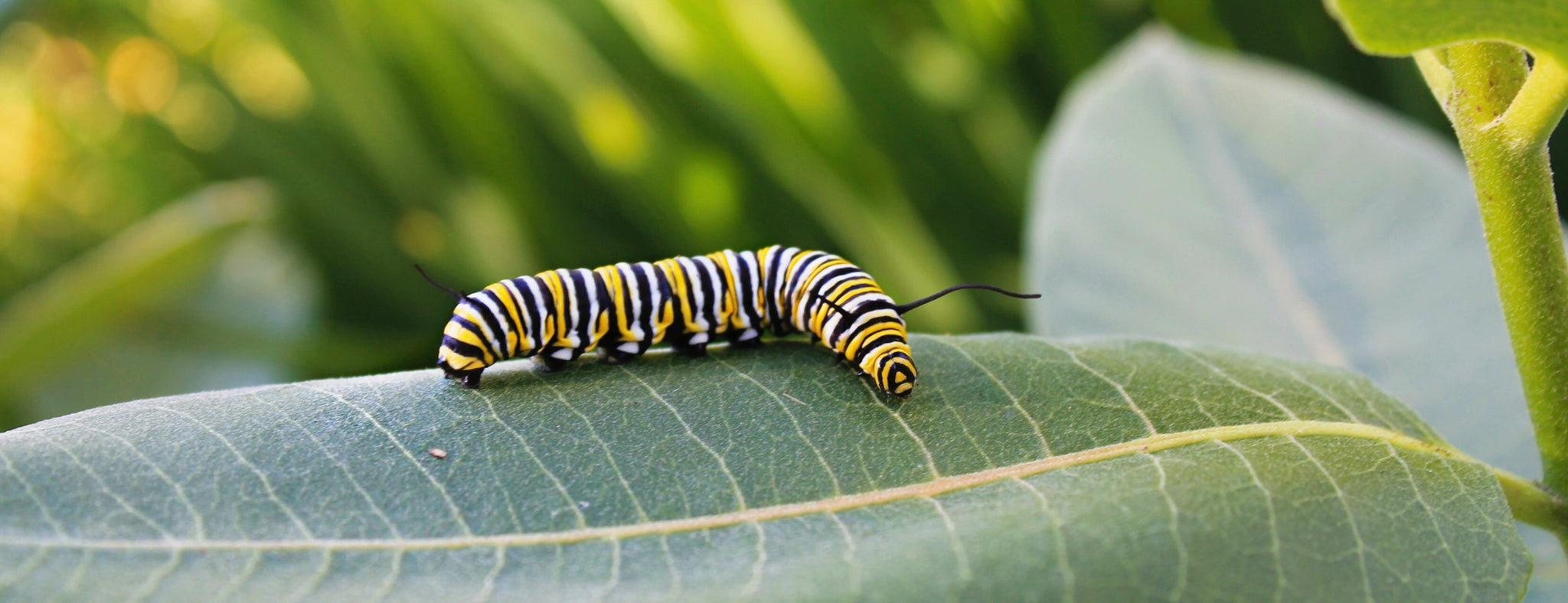
Each Summer, we anxiously await the arrival of our first monarch caterpillar to the shoppe. We keep our eyes peeled for butterflies and begin our hunt in some nearby hay fields that are full of fresh milkweed plants. Each year is different and we cannot accurately predict how many we will find. Last year, we found and released a total of 12 butterflies all season. The year before it was 8, and the year before that it was 54! This year, we have been thrilled with the early arrival of 15 caterpillars to our rearing enclosure and it's only the beginning of August!
My monarch raising days began when I pulled an unwanted milkweed from the middle of my parents' garden. The caterpillar was munching away under one of the leaves and I fortunately noticed it before I discarded the plant. I did some research and placed the plant (in a bottle with water) along with the munching caterpillar in a small, glass aquarium. We fashioned it with a screen top and watched its every move. At the time, our two boys were young and it served as a great teaching tool. Little did I know that it would symbolize the beginning of an annual ritual AND one day contribute to the idea behind our business logo!
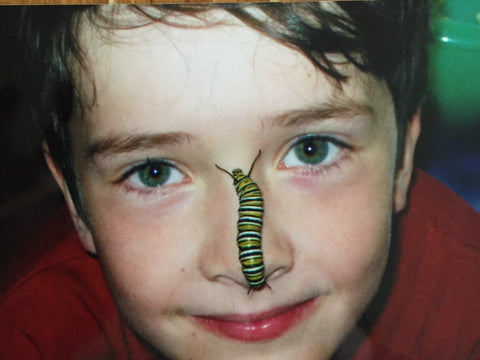 |
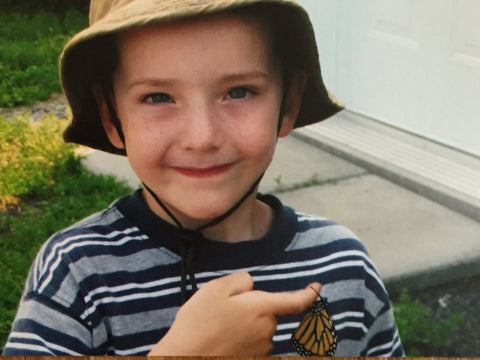 |
Now we have a large, glass aquarium in our shoppe which can hold up to about 20 caterpillars at a time. Visitors can watch the monarchs in their various stages and learn about the life cycle. By bringing the caterpillars indoors, they are given a much better chance of survival. Only about 1 in 100 will survive from egg to butterfly in the wild!
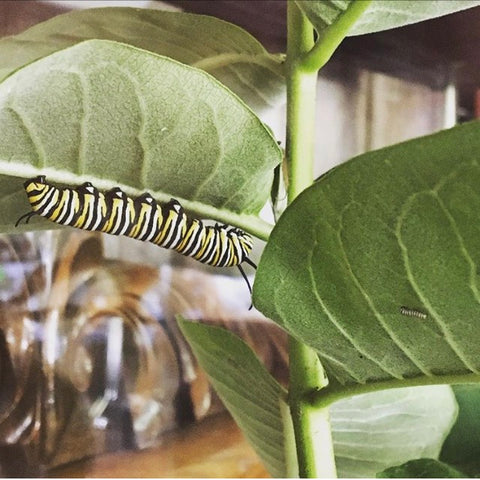 |
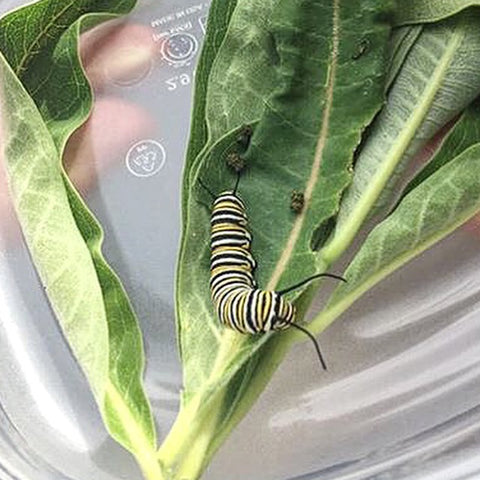 |
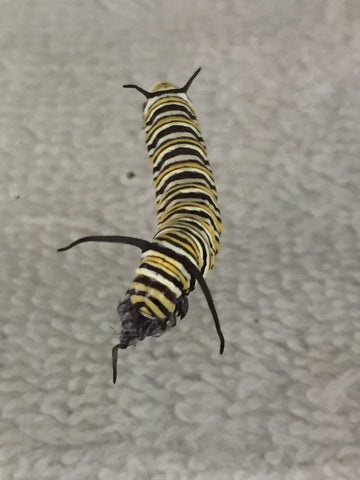 |
As the caterpillars grow and become too large for their skin, they molt or shed their skin - much like a snake - but the shed skin is often eaten before the caterpillars ingest more plant food! The intervals between molts are called instars. The entire larval (caterpillar) stage in monarchs lasts from ten to fourteen days under normal summer temperatures. |
Just before they pupate (go into their chrysalis), monarch larvae spin a silk mat from which they hang upside down. The silk comes from the spinneret on the bottom of the head. As it sheds its skin for the last time, the caterpillar stabs a stem into the silk pad to hang. A monarch pupa is like an emerald green gem with gold dots around the top.
During the pupal (chrysalis) stage transformation is completed. Many moth caterpillars (but not all) spin a silken cocoon to protect them as pupae. Butterflies do not do this and that is why it is not correct to call a butterfly pupa a cocoon, since it does not have a silken covering.
Much like when a baby is due to be born, it's hard for us to know exactly when the butterfly will emerge from its pupa. Pupae turn darker the day before the butterflies emerge, and look black on the day they emerge. At this point, the wings are visible. The butterflies usually emerge in the morning; their wings will be soft, flexible, and wet at first. If you are fortunate to ever get the opportunity to watch a butterfly emerge, it's quite a thrill! There is tremendous effort and it only takes a few minutes to happen which is why the monarch rests and gains strength for hours afterwards.
It takes monarchs about a month to go through the stages from egg to adult, and it is hormones circulating within the body that trigger the changes that occur during metamorphosis. Once adults, Summer monarchs will live another two to six weeks.
The final generation of monarchs, (the ones we raise in the shoppe) that emerge in late summer and early fall, has an additional job. They migrate to overwintering grounds over 3000km away, in central Mexico. Here they spend the winter clustered in trees until weather and temperature conditions allow them to return to their breeding grounds. These adults can live up to nine months!
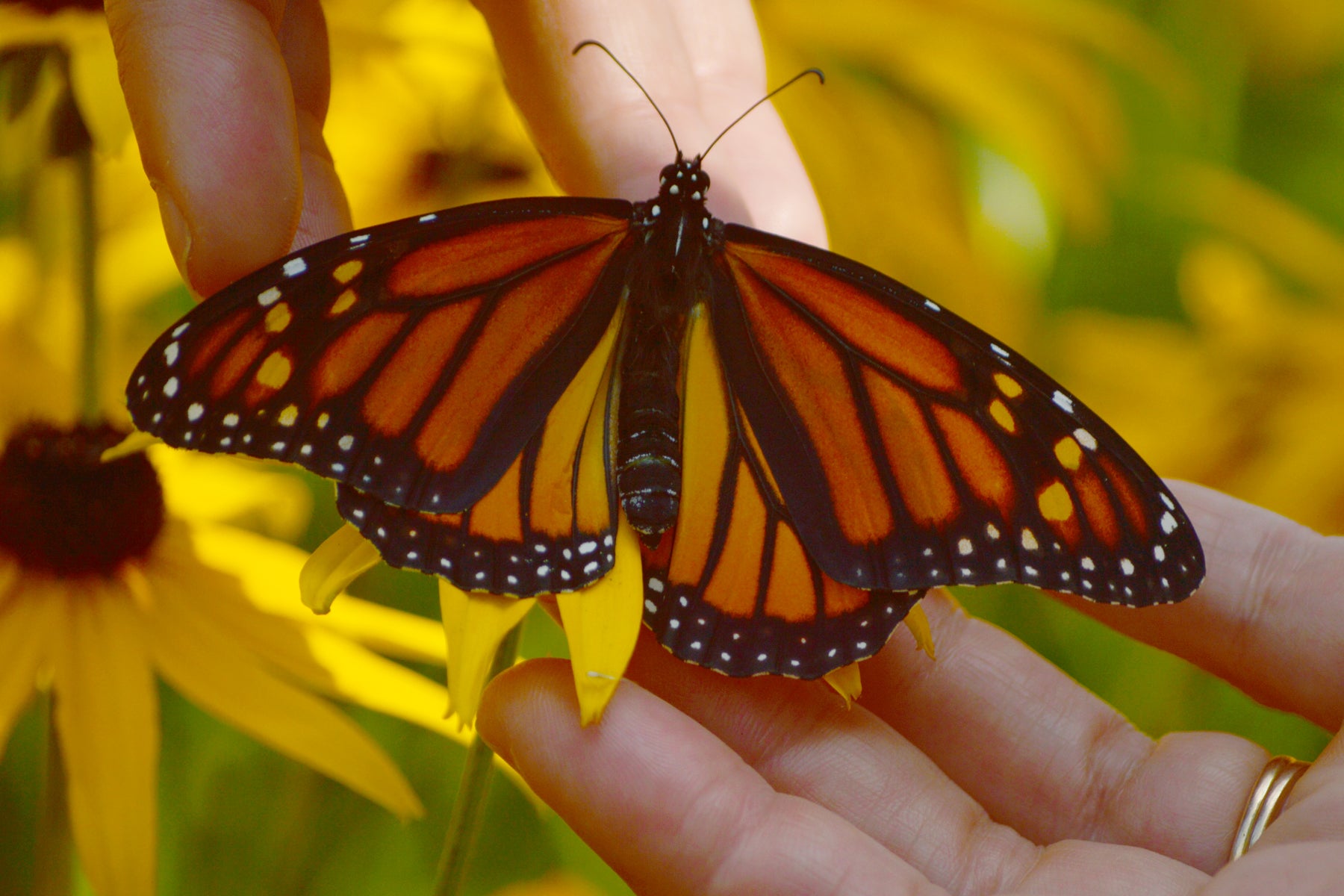
Before we release our butterflies, they are tagged with a unique code on a sticker from Monarch Watch that is placed on a particular part of the lower wing. The purpose of the tagging is to associate the location of capture with the point of recovery for each butterfly. The data from these recaptures are used to determine the pathways taken by migrating monarchs, the influence of weather on the migration, the survival rate of the monarchs, etc.
What can YOU do to help the monarchs? Leave the milkweed (the caterpillar's only food source) around your property and if you don't have any, plant some or purchase some butterfly weed from a local greenhouse. Butterfly weed is a beautiful perennial that is in the same family as the wild milkweed, but it is not invasive. Try your hand at raising a caterpillar! Monarch Watch and Monarch Lab are two great resources!
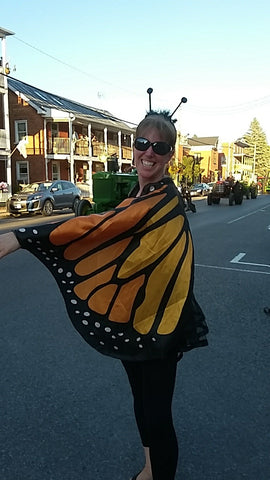
|
Let's work together to help this beautiful, little creature survive. For updates on our current caterpillars, follow us on Facebook & Instagram! |
2 Responses
Gary Paquin
I have left the milkweed plants bordering my rather large lawn area for years. And it’s been years since I have seen any Monarchs. Till this year. In Cushendall, Just north of Kingston, Ont. we have finally spotted them. Well over a dozen. Nice to see.
Leave a comment
Comments will be approved before showing up.
Also in Updates from GPHS

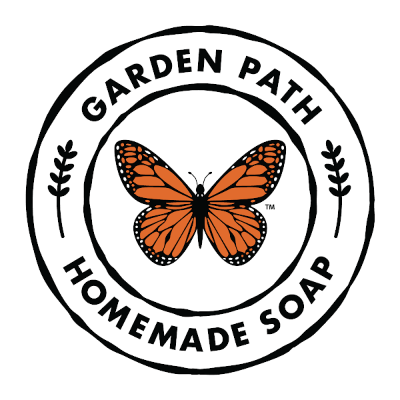
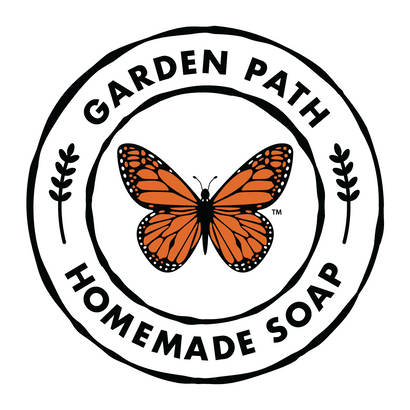

Sylvie
January 19, 2023
I have a large patch of milkweed with one monarch showing up every year. However, by the end of July, the milkweed is totally infested with aphids with the leaves becoming quite sticky. Is this harmful for the monarch caterpillars and the monarch themselves? If yes, how can I stop the aphids from taking the milkweeds?